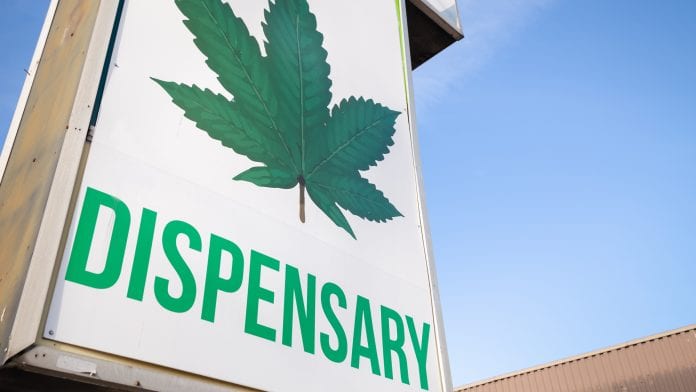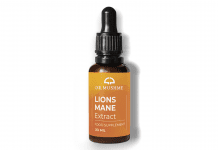
Dr Philippa Hawley tells Health Europa Quarterly about the effects of recreational legalisation on medical cannabis users
Following the broadly successful legalisation of cannabis for medical use in 1999, Canada implemented legislation in 2018 permitting the recreational use of the plant and its derivatives. In an October 2020 paper titled ‘The impact of legalisation of access to recreational cannabis on Canadian medical users with cancer’ Dr Philippa Hawley, Head of Palliative Care at British Columbia University, examined the effects of the changing legislation on the Canadian supply chain, with a particular focus on how patients who had been receiving prescribed medical cannabis for symptoms associated with cancer were impacted. Dr Hawley tells HEQ about her research and the evolving cannabis landscape in Canada.
What are the key benefits offered by medical cannabis for patients with cancer?
There is evidence that cannabis can have benefits for some patients in the treatment of symptoms caused by cancer or its treatment, particularly chemotherapy-induced nausea and vomiting, and for neuropathic pain such as peripheral neuropathy. Not all patients experience a significant response, and some tolerate cannabinoids better than others, but a trial of a suitable product starting low and increasing gradually is worth considering if regular medications are not working as well as desired. Other symptoms such as anxiety, sleep disturbance, loss of appetite and sweating have been reported to respond to medical cannabis in some patients, but these effects have to be confirmed by clinical trials before being able to be recommended to patients in anything other than a ‘try it and see’ approach.
At this time, any suggestion of anti-cancer effect from cannabinoids is conjecture: there are some encouraging laboratory studies showing that cannabinoids can affect cancer cell growth, but the evidence in humans is very preliminary and hard to interpret. It is a very complex area of medicine, with issues such as different levels of different cannabinoids having the potential to either suppress or promote cancer cell growth. There is also a strong possibility that cannabinoids might prevent some kinds of cancer treatments (immune therapies) from having their full effect, thus having potential to actually worsen outcomes. This is an area that needs much more research; and it is thus currently not possible to make any recommendations for cannabinoid therapy for cancer control in individual patients.
How has the legalisation of cannabis for recreational use impacted users of medical cannabis? Has availability become an issue?
When recreational cannabis use became legal it took a while for Health Canada to process the licences of the new legal walk-in dispensaries; and there was a period of time where many of the illegal dispensaries, many of which were providing product to patients for medical purposes as well as for recreational use, were closed down but their legal counterparts had not yet been approved. There was a pre-existing legal medical supply system, but it was somewhat complicated for patients to negotiate, and the majority of medical cannabis users were not using it to access their medical cannabis products.
Transition to the legal medical supply system was difficult for some patients and led to some not being able to access their preferred products for a while. This seems to have largely been worked out now, with adequate supplies of product now available from the legal medical supply system. It remains somewhat challenging to negotiate, however greater familiarity with the process and better support for patients through the various producers’ websites has made it easier. Some clinics were set up to help patients navigate the process and gradually physicians and nurse practitioners have become more informed, though there is still much work to be done in the area of education about cannabinoid therapy and not all patients have the support that is needed.
What are the main barriers patients have encountered in accessing medical cannabis?
As mentioned above, the medical access system is tricky to navigate. Patients essentially have to be able to access the licensed producer via the internet and pay by credit card, providing an address for delivery. There are some special arrangements that can be made for those that do not have these, but they require considerable support from healthcare providers to set up. Some patients had unfounded fears that by registering with a licensed producer their confidentiality might be compromised, meaning that they might not be allowed to travel to the USA. Though it is of higher quality (pesticide- and mould-free and accurately labelled as to constituent cannabinoids), the cost of legal medical cannabis was higher than that available from illegal dispensaries. This was an important factor for many patients, as the medicine was rarely covered by any healthcare benefits plan and could be quite expensive.
Lastly, some patients had been used to taking products that were not available from the legal medical route, for example edibles (cookies, candies etc.) or suppositories. Having to transfer to the oil extracts, gel caps or dried plant products which are available through the legal medical system was challenging, and initially anything other than dried plant product was in very short supply. Regulatory changes have now reduced the restrictions on the types of products licensed medical producers can sell, but some products patients found useful are still not legally available.
How could Canadian cannabis regulation evolve to better meet the needs of medical cannabis users?
This is a difficult question to answer because the regulations have been slowly evolving, with the goal of allowing patients to have access to a safe supply of appropriate medical products, while at the same time having to keep a parallel separate system of access for recreational users which is much easier to access. As long as the two systems are separate, and as long as the medical supply is more complicated and more expensive, medical users will continue to access cannabis products from potentially unreliable sources, and to face challenges getting good advice on how to use them appropriately and safely. Having legal medical products available through pharmacies seems to be the most likely next step in the regulatory journey. This is already possible through online purchase, which has the same barriers as buying direct from a licensed producer, but not yet at walk-in pharmacies.
Should more action be taken to filter black market products out of the supply chain?
Yes; though many illegal suppliers may have perfectly safe products, and feel they are providing a valuable service to their customers, not all illegal suppliers can be relied upon. There are still patients experiencing difficulties knowing what to take, how to take it, and not knowing what is in some of the products they have bought from illegal sources. Medical users often cannot discriminate between legal and illegal vendors and cannot be expected to be able to select the most appropriate product and dose themselves. Having a reliable, safe and easily accessible source, as close to a pharmacy as possible if not an actual pharmacy, will enable healthcare professionals to incorporate cannabinoid therapy into their therapeutic armamentarium alongside standard medical therapies.
Medical research into the therapeutic use of cannabinoids has been extremely difficult and expensive to accomplish, and only recently has it become possible to do clinic trials using the sort of products that patients can purchase already. This is one reason why the buccal spray nabiximols (Sativex®) is as yet the only Health Canada-approved plant-derived medical cannabis product and why it is too expensive for the majority of potential patients to be able to access. Licensed producers will need to invest heavily in research and high-quality production facilities to be able to submit applications for product approval through Health Canada, but there is little incentive for them to do so at present when they can sell their product without such approval.
In the meantime, clinical trials can be carried out with legal research-grade plant-derived cannabis-based products, and the results can help guide the incorporation of cannabinoid therapy into mainstream medicine. Despite appearing compelling, anecdotal reports from individual patients constitute a form of medical evidence but a much lower level of evidence than controlled clinical trials where side effects and clinical outcomes are carefully and systematically assessed.
Philippa Hawley
Head of Palliative Care
University of British Columbia
https://medicine.med.ubc.ca/profiles/philippa-hawley/
This article is from issue 17 of Health Europa. Click here to get your free subscription today.


















